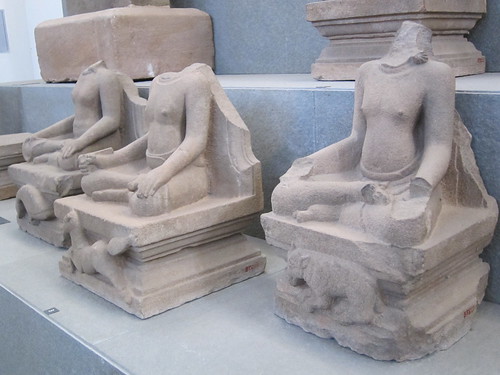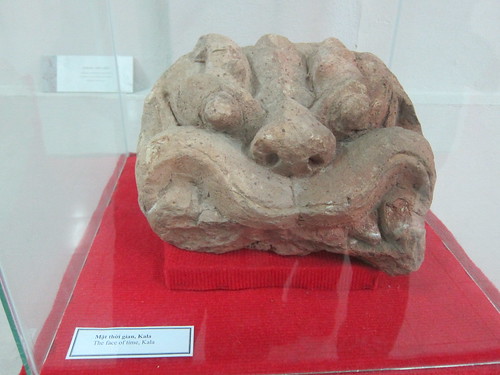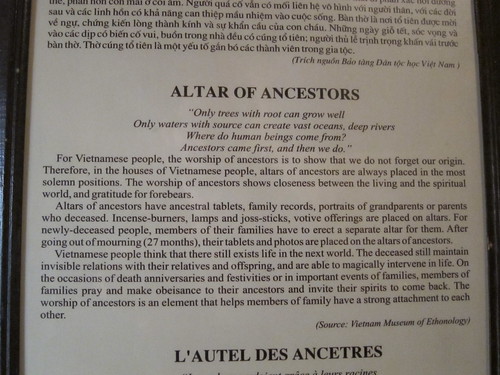Snakes, birds, yoga pose
God of Time and Consequence
Headless Cham statues
February 26, 2011
At Danang’s bus station early in the morning we got off a minibus going to Kon Tum because they were trying to overcharge us, made us sit in the back of the bus, and in general treating us rudely. The next bus that left was fortunately a Mai Linh Express, however it was going at 2 pm so we had the day to kill. We hopped a taxi to the center of town and checked out a museum of Cham artifacts. The Cham kingdom existed a millennium ago throughout modern day Cambodia and southern Vietnam, during around the same time as the temples were built by Angkor Wat. Their beliefs were a mix of Hinduism and Buddhism and so many of their statues were of Krishna, Vishnu, and other gods. Often their limbs would be a bit longer than they should be proportionally and stuck out at weird angles. There where many statues of the bird god Garadu and dozens of Naga which are mythical water snakes. The story of Garadu and the Nagu comes from the Hindu Ramayana.
While there was no statues of the “God of Time and Consequence†there where several depiciting the God of Time. A neat God to have in and of itself, the printed guide wrote it as the “God of Time and consequence†and then on the next line: “ly, many of the….†We liked this title better. The God of Time was depicted as a single floating head without a body – this was in stark contrast to many of the other statues in the museum which had bodies, but whose heads were removed due to invaders who chopped them off, or collectors who decided that the heads were all that they could carry away.


